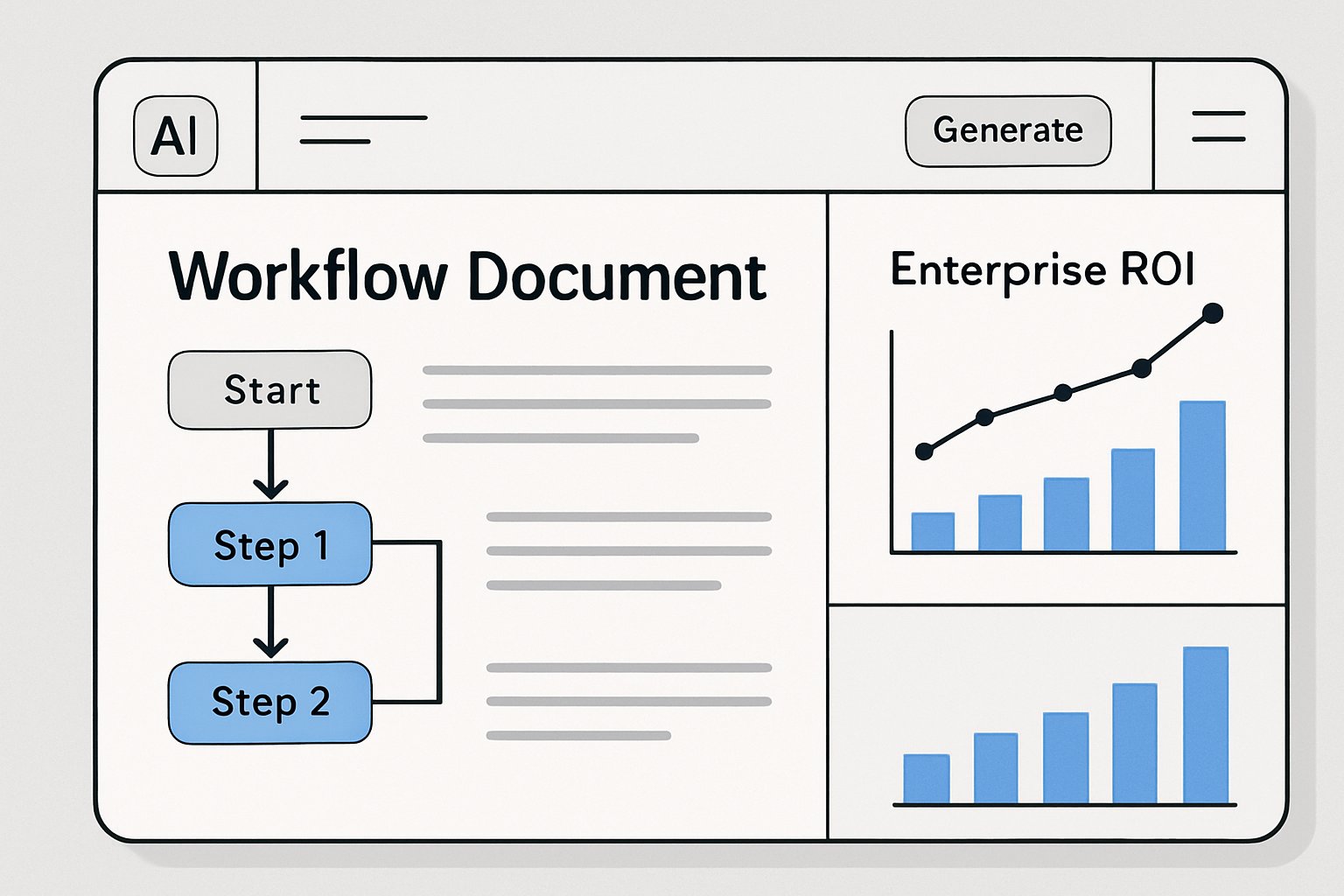
AI CERTS
5 hours ago
Scribe’s $1B+ AI Workflow Documentation Leap
Simultaneously, Scribe unveiled Scribe Optimize, a tool that highlights which repetitive tasks deserve automation. Moreover, the launch signals a strategic pivot toward decision-ready insights rather than static screenshots. This article dissects the raise, product, and broader market to guide technology leaders. Along the way, we evaluate promises around operational efficiency and cautionary data on abandoned AI pilots. Expect practical tips on capturing AI workflow documentation at scale.

Funding Fuels Rapid Rise
Investors led by StepStone injected $75 million into Scribe’s Series C. Therefore, the round confers a $1B+ valuation and underscores surging demand for process automation tools.
TechCrunch reports more than five million users and 78,000 paying organizations. Moreover, Scribe claims teams inside 94% of Fortune 500 companies create guides daily. Consequently, venture backers view the company as a gateway to massive process automation budgets.
These numbers validate investor confidence in AI workflow documentation providers. Next, we examine market drivers supporting that optimism.
Market Context And Demand
In contrast, global process mining software reached roughly $1.4 billion in 2024, analyst data show. Grand View Research projects $21.9 billion by 2030, implying fifty-plus percent compound growth. Meanwhile, MarketsandMarkets expects double-digit acceleration as enterprises chase operational efficiency gains.
These expansions overlap with AI workflow documentation because captured tasks feed discovery models. Furthermore, improved visibility helps executives align process automation spending with measurable returns. Business intelligence teams also demand ground-truth data rather than anecdotal opinions.
Broad forecasts create fertile ground for AI workflow documentation adoption. However, product details reveal how the company plans to capture that wave.
Inside New Scribe Optimize
Scribe Optimize extends the capture engine with continuous monitoring and prescriptive analytics. Therefore, customers see not only screenshots but ranked opportunities for bots, scripts, or agents.
- Average user saves 35-41.6 hours monthly, according to a 2025 customer survey.
- Optimize has mapped more than 10 million workflows across 40,000 applications.
- It highlights frequency, duration, and variance metrics to support business intelligence dashboards.
- Subsequently, the software suggests high-ROI process automation candidates with projected payback periods.
Consequently, Scribe positions Optimize as a lightweight alternative to heavy process mining suites. Additionally, the interface embeds AI workflow documentation directly in end-user platforms, reducing context switching.
These capabilities aim to convert visibility into action. Still, competing vendors are not standing still.
Competitive Landscape Deep Dive
Celonis, UiPath, and SAP Signavio dominate process mining budgets at large enterprises. However, those suites can require months of integration before insights flow.
Meanwhile, lighter rivals like Tango and Iorad focus on generating how-to guides, not process intelligence. In contrast, Scribe straddles both camps by merging AI workflow documentation with real-time analytics. Analysts suggest this middle position could appeal to midmarket teams lacking six-figure budgets.
Nevertheless, incumbents possess deeper channel relationships and larger R&D resources. Therefore, Scribe must maintain rapid product velocity and tight security controls to compete.
Competitive pressure will intensify as budgets loosen. Risk evaluation now becomes crucial.
Balancing Hype And Risk
S&P Global notes that 42% of enterprises scrapped most AI projects during 2025. Consequently, executives demand proof before funding new experiments.
Jennifer Smith addresses the concern directly. She argues that surfacing hard data first accelerates operational efficiency without runaway spending. Furthermore, she claims Optimize creates ranked business intelligence stories rather than abstract metrics.
Still, privacy remains a sticking point. Scribe cites SOC-2 audits and data residency options, yet buyers will scrutinize evidence. Moreover, the company must document how AI workflow documentation avoids capturing sensitive fields.
Balanced messaging can convert skeptics into adopters. Now we gauge expected returns.
Enterprise Impact And ROI
Scribe’s survey claims users reclaim up to a full workweek each month. Additionally, onboarding time reportedly drops by 50% when guides embed inside applications.
Such gains translate into tangible operational efficiency for frontline employees. Moreover, Finance leaders appreciate that dashboards assign dollar amounts to proposed process automation. Business intelligence specialists can also export captured events into existing data warehouses.
StepStone expects these combined effects to justify the $1B+ valuation within two years. Consequently, doubles in revenue growth could follow if adoption keeps pace.
Professionals can deepen supply-chain mastery through the AI Supply Chain™ certification. Therefore, teams will pair AI workflow documentation insights with accredited skills for sustained impact.
Verified ROI stories will drive future budgets. What might tomorrow hold?
Ultimately, Scribe’s unicorn arrival crystallizes a broader shift in enterprise tooling. Organizations increasingly demand AI workflow documentation that links captured steps to outcomes.
Consequently, vendors able to quantify savings enjoy premium pricing and $1B+ valuation milestones. However, governance, privacy, and user consent must remain priorities.
Leaders evaluating Scribe should request audit reports, methodology details, and reference customers. Moreover, pairing captured insights with accredited education unlocks sustained returns.
Explore additional certifications and deepen your automation strategy today. Additionally, consider piloting Optimize on a single workflow before enterprise rollout. Subsequently, measure onboarding speed, process automation costs, and operational efficiency improvements. In contrast to prolonged consulting projects, early proofs can surface ROI within weeks.



